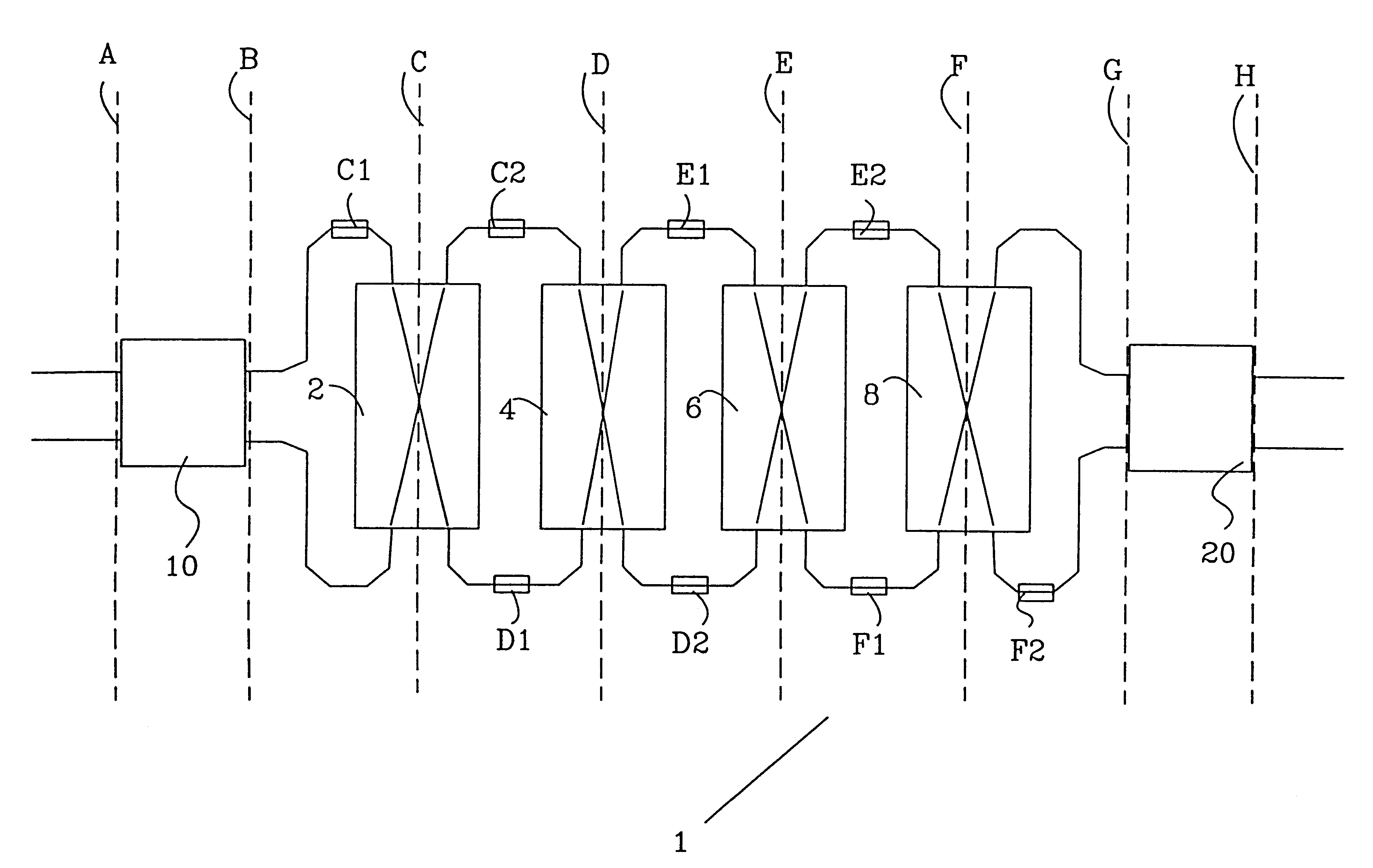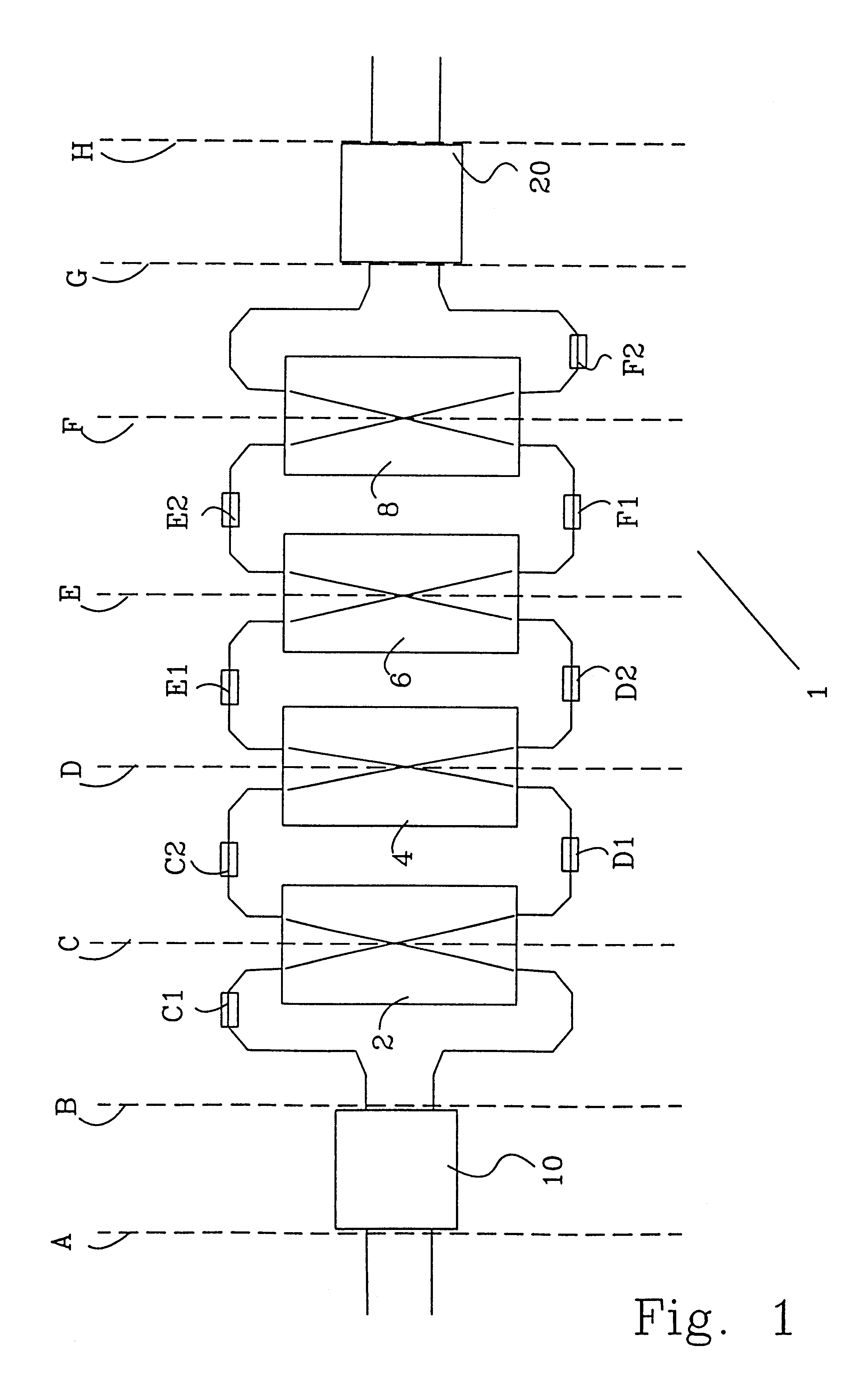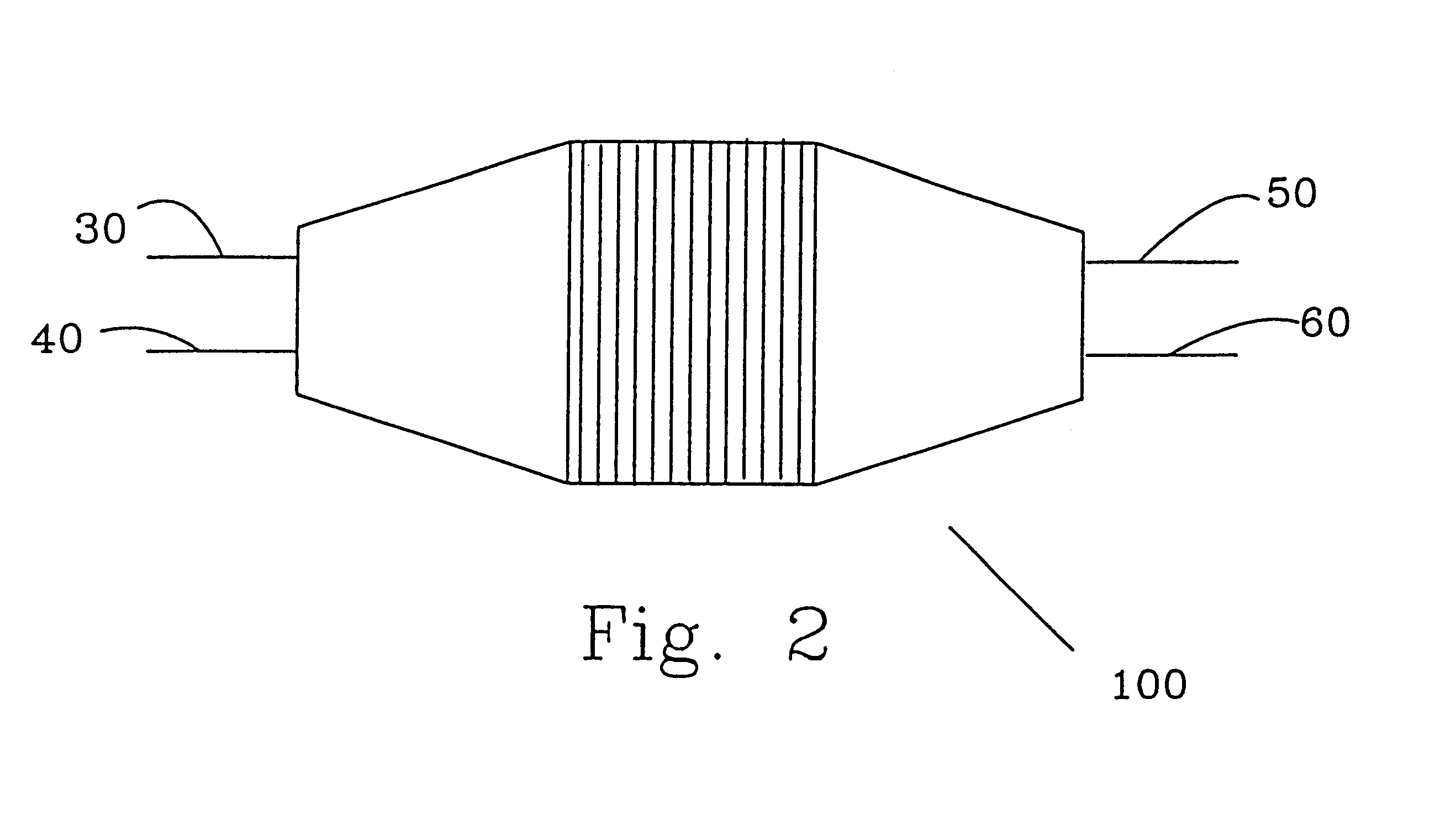Wavelength selective switching element
a technology of selective switching and above-described switches, which is applied in the direction of optical elements, instruments, optical waveguide light guides, etc., can solve the problems of large power loss, high cost, and difficult re-configuration of devices,
- Summary
- Abstract
- Description
- Claims
- Application Information
AI Technical Summary
Benefits of technology
Problems solved by technology
Method used
Image
Examples
Embodiment Construction
FIG. 1 shows an embodiment of a wavelength selective switch 1 according to the invention. The wavelength selective switch 1 comprises two multi-mode waveguides 10, 20, four wavelength selective cross-connection structures 2, 4, 6, 8, eight phase control elements C1, C2, D1, D2, E1, E2, F1, F2, ten connection waveguides and access waveguides provided on both of the multi-mode waveguides 10, 20 and on the cross-connection structures 2, 4, 6, 8.
An optical signal comprising a number of different wavelengths is excited into the access wave guide provided on a first side of a first multi-mode waveguide 10. The optical signal is transmitted through the multi-mode waveguide 10 and projected on the access waveguides provided on an opposite side compared to where the optical signal was excited. The signal is projected depending on length-width ratio on the multi-mode waveguide 10 and the arrangement of the access waveguides. Assume that length-width ratio is like that an optical signal which ...
PUM
 Login to View More
Login to View More Abstract
Description
Claims
Application Information
 Login to View More
Login to View More - R&D
- Intellectual Property
- Life Sciences
- Materials
- Tech Scout
- Unparalleled Data Quality
- Higher Quality Content
- 60% Fewer Hallucinations
Browse by: Latest US Patents, China's latest patents, Technical Efficacy Thesaurus, Application Domain, Technology Topic, Popular Technical Reports.
© 2025 PatSnap. All rights reserved.Legal|Privacy policy|Modern Slavery Act Transparency Statement|Sitemap|About US| Contact US: help@patsnap.com



